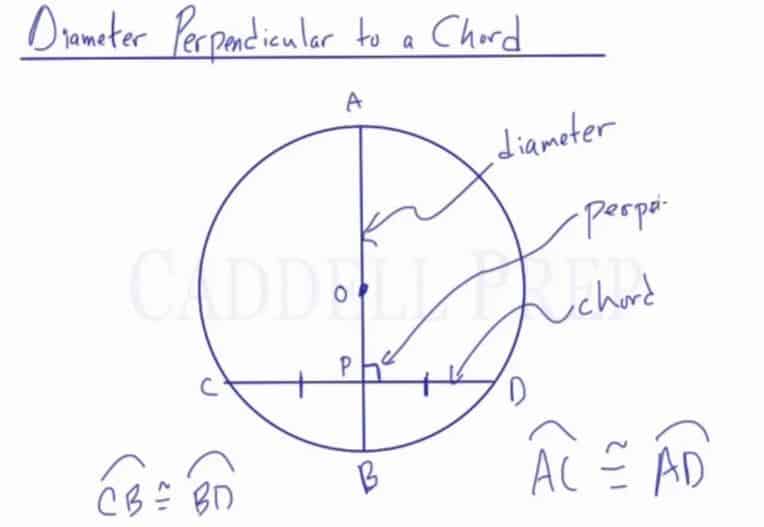In this lesson, you will learn the relationship that exists between a diameter and perpendicular chord. You will learn the formula to calculate missing measurements of line segments created when a diameter is intersected by a perpendicular chord.
In this video, we are going to look at line segments formed by a diameter and perpendicular chord.
Given circle , with diameter
, we drew chord
where it intersects the diameter and is perpendicular at point
. When a diameter and a chord intersect in this way, the diameter bisects the chord, so
is the same length as
. The chord does not necessarily bisect the diameter. The arcs are also the same length. In this example, arc
and arc
are congruent to each other, and arcs
and
are also congruent to each other.
Video-Lesson Transcript
In this lesson, we’ll take a look at diameter drawn that is perpendicular to a chord.
Here, we have circle and its diameter is drawn.
Now, let’s draw a chord perpendicular to the diameter.
Let’s name the lines.
We have diameter , chord
and they intersect at point
. It’s perpendicular at point
.
Once the diameter and the chord intersect, the diameter bisects the chord. So, has the same length as
.
Notice that the chord does not necessarily bisect the diameter. As we can see, is much longer than
.
But the chord is split in half. It will happen regardless of where we draw the chord. Just as long as it’s perpendicular to the diameter.
Not only these two line segments are the same length, but also the two arcs are of the same length.
and
are going to have the same length.
So, we have
We also have and
are also congruent.
Very important is that you have to have a diameter, you have to have a chord, and they must be perpendicular to each other.
If that’s the case, we get two pairs of congruent arcs and also the diameter bisects the chord.



